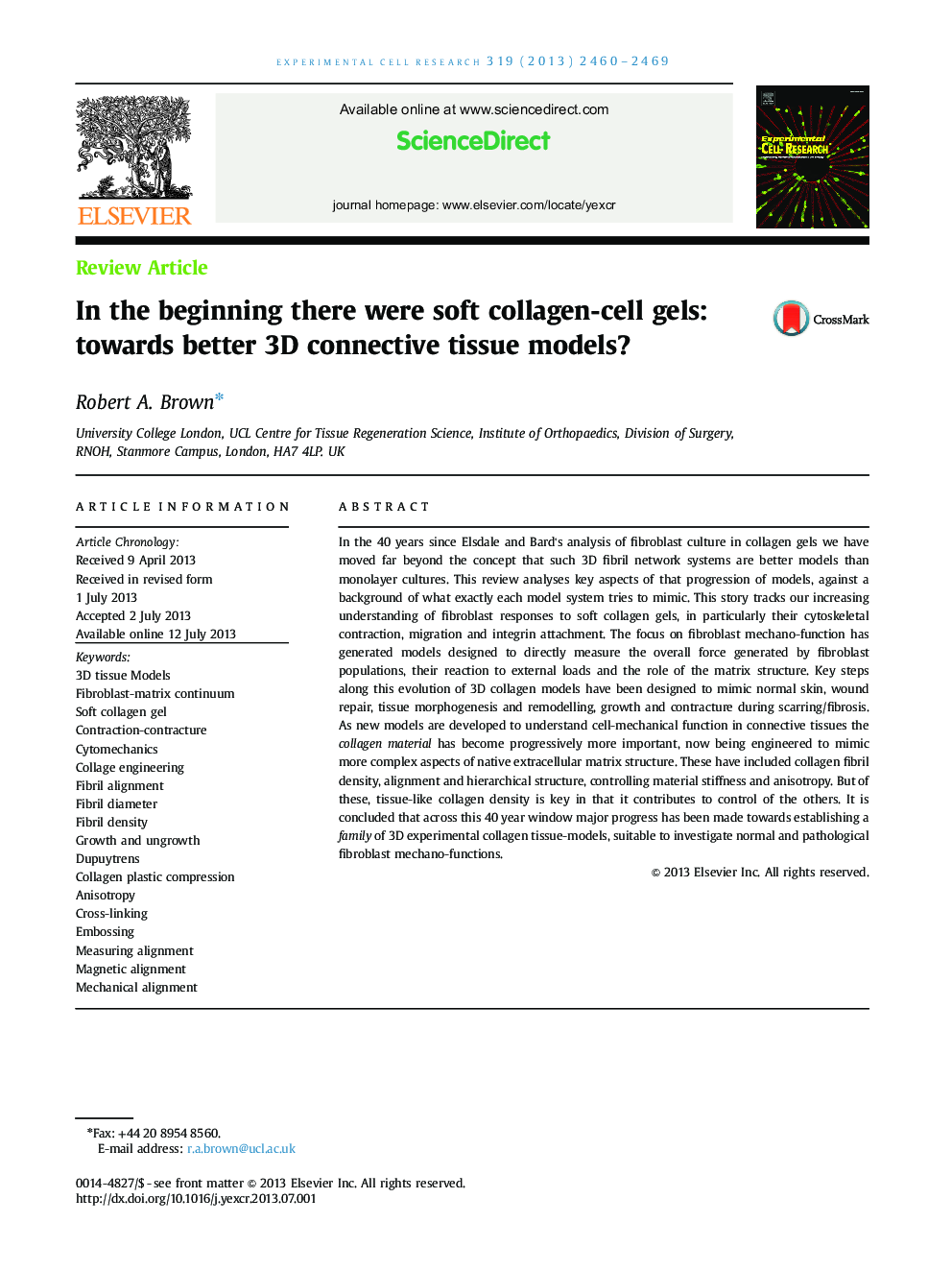| Article ID | Journal | Published Year | Pages | File Type |
|---|---|---|---|---|
| 10904217 | Experimental Cell Research | 2013 | 10 Pages |
Abstract
In the 40 years since Elsdale and Bard's analysis of fibroblast culture in collagen gels we have moved far beyond the concept that such 3D fibril network systems are better models than monolayer cultures. This review analyses key aspects of that progression of models, against a background of what exactly each model system tries to mimic. This story tracks our increasing understanding of fibroblast responses to soft collagen gels, in particularly their cytoskeletal contraction, migration and integrin attachment. The focus on fibroblast mechano-function has generated models designed to directly measure the overall force generated by fibroblast populations, their reaction to external loads and the role of the matrix structure. Key steps along this evolution of 3D collagen models have been designed to mimic normal skin, wound repair, tissue morphogenesis and remodelling, growth and contracture during scarring/fibrosis. As new models are developed to understand cell-mechanical function in connective tissues the collagen material has become progressively more important, now being engineered to mimic more complex aspects of native extracellular matrix structure. These have included collagen fibril density, alignment and hierarchical structure, controlling material stiffness and anisotropy. But of these, tissue-like collagen density is key in that it contributes to control of the others. It is concluded that across this 40 year window major progress has been made towards establishing a family of 3D experimental collagen tissue-models, suitable to investigate normal and pathological fibroblast mechano-functions.
Keywords
Related Topics
Life Sciences
Biochemistry, Genetics and Molecular Biology
Cancer Research
Authors
Robert A. Brown,
